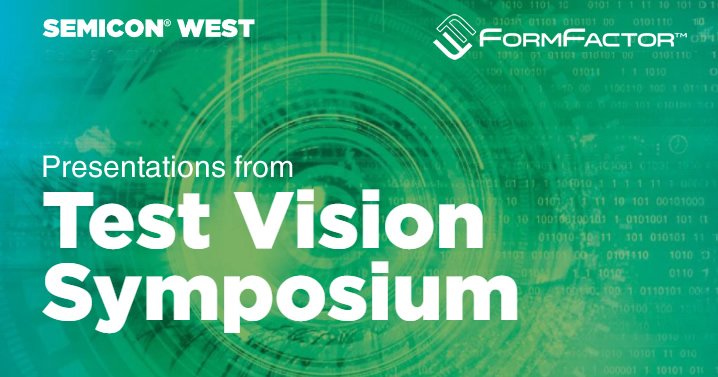FormFactor is fresh off our participation in TestVision – July 12th and 13th – where we gave three presentations. The following presentations are now available for download:
Quantum and CryoCMOS: Enabling the Future of Computing with Advanced test & Measurement Tools
Advanced computing and quantum computing devices require cryogenic conditions for the processor itself as well as the control chips that drive microwave signal to the processor. These advanced devices typically include niobium or aluminum superconducting circuits, and their support chips are based on cryogenic compatible CMOS structures. Bringing this new technology from the research and development phase, out of the lab and into engineering scale production and ultimately volume production requires specialized tools to test, measure, and deploy the advanced devices all in sub-4K environments. The major bottlenecks include time-consuming wire bonding, expensive packaging processes prior to device cooldown, and long cooldown times for dilution refrigerators. FormFactor is the leading enabler of quantum computing developers with its suite of cryogenic test and measurement tools as well as deployment solutions. We discuss a customer case study implementing cryogenic wafer probing on SFQ circuits to obtain statistical datasets in hours that would otherwise take weeks or months, a new tool for rapid die testing that makes use of a cryogenic high-density MEMS probe head, enabling photonics probing below 2K, and the deployment of quantum devices in milli-Kelvin dilution refrigerator cryostats with a probe socket interface.
Download this presentation here.
Production Test RF Calibration Methods for Probe Cards
During RF measurement in production environments, the increased accuracy required for Known-Good-DUT requires RF calibration to the probe tip. This is due to the higher bandwidths and higher channel counts for semiconductors chips that are supporting 5G FR2 and as well as chips that are moving data in and out of large data centers. However, calibration substrates in general have not been designed to provide the best measurements possible due to the unique layouts of these devices. This can be attributed to the un-controlled RF state of the non-measured channels interacting with the channels that are being measured as well as the limitations due to the types of RF calibration algorithms that are available for HVM wafer test at RF. I will review some design methodologies for making the calibration substrates, as well as which RF calibration methods are best for the particular layout. In addition, I will present example RF measurements of these different situations that can be used for calibration verification prior to wafer test.
Download this presentation here.
Advancing Probe Card Parallelism for SOC Devices
The demand for semiconductor devices continues to increase at an unrelenting pace. Integrated circuits are in more and more of the products and services we use and interact with in our everyday lives. One segment of particular interest is the automotive semiconductor market. Semiconductor device content is increasing from an average of $400 per standard automobile to over $1,100 for battery electrified vehicles. This increase in the semiconductor content causes additional pressure on the semiconductor suppliers to further reduce device costs.
One approach to reducing the device costs is to reduce the cost of test of the devices. In order to reduce the cost of test for automotive devices, Infineon worked with FormFactor to implement the production proven TrueScale Matrix platform for the V9300 direct dock tester. The TrueScale Matrix product had previously been deployed into production on traditional round PCBA tester configurations. Working together, the initial configuration was developed in a rectangular probe head configuration providing an active area to 200mm by 300mm resulting in a significant increase in the probe card parallelism and reducing the overall cost of test. An additional enhancement to the probe card architecture enabled a 300mm full wafer contactor solution to further increase the parallelism and test efficiency.
This presentation will review the results of the collaboration between Infineon and FormFactor to implement the high parallelism TrueScale Matrix product solution on V93000 direct dock tester systems. In addition, superior thermal mechanical design of the probe card provides a capability to use same probe card over wide temperature range from -40oC to 150oC. We will also share extensive engineering characterization results on prober deflection and thermal behavior, high pin count probe card AOT vs. POT and the low force MEMS probes on wafer pad to achieve stable contact over the large probing array with minimal impact to the test pad.
Download this presentation here.
